Talk to your vet before purchasing to make sure the splint is the right one for your dog and their condition!
How to Choose a Walkin’ Dog Splint
Small animals frequently need to splint or brace injures to a lower limb. Choosing a splint is simple if you follow the diagram below to see which is right for your pet.
Where Does it Hurt?
First of all, identify where the dog’s injury is: front or rear paw, carpal, or hock?

A pet’s front and back legs are shaped very differently. Therefore, identifying which leg and joint are affected will play a big part in choosing the proper leg support for your pet.
A dog’s front legs include the wrist or carpal joint on the lower part of the leg, with the elbow on the upper leg.
The lower rear legs of a dog are made up of the ankle or hock joint with the knee on the upper leg. The hock connects the shin bones to the bones of the paw. The hock has a much deeper bend than the carpal joint in the front leg.
FRONT LEGS
There are three different Walkin’ Pet splints designed for a pet’s front leg. The Bootie, Carpal, and Front dog splints provide stability and support for the lower front limbs of your pet (carpal and/or paw).
Bootie Splint
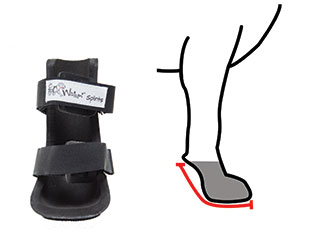
A Bootie Splint will support a dog’s front foot and wrist up to the carpal joint. It will not provide support to the carpal joint.
If support under the paw is needed, use a splint with a boot for injuries such as knuckling or toe injuries.
Carpal Splint
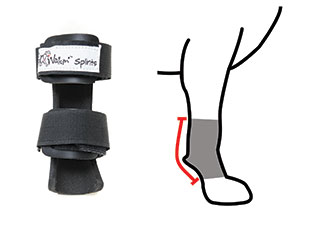
Use the a carpal splint is best for support around the carpal (wrist) joint for conditions such as carpal hyperextension, carpal joint instabilities, osteoarthritis of the carpal joint, or soft tissue injuries.
The carpal splint will support a dog’s carpus and directly above and below the joint. With this brace style, the dog’s paw is left free, so the pet can walk normally. If your dog requires support under its front foot, you will need a Front Splint.
Front Splint
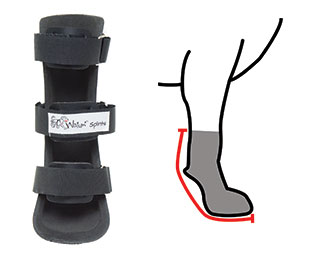
A front leg splint offers pets the most lower front leg support. This splint will support above the carpus and under the pet’s paw.
REAR LEGS
Walkin’ Pets has three different style of rear leg splints. If your pet needs support for the lower rear limbs (hock and/or paw), then consider the Bootie, Hock, and Rear dog splints for stability.
Bootie Splint
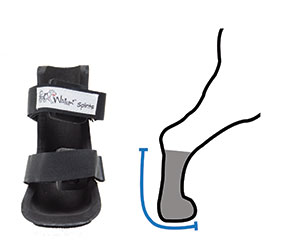
A bootie splint will support a dog’s rear foot and ankle up to the hock joint. It will not provide support to the hock joint.
If your dog is knuckling, or has injured it’s ankle or back toes, then use the a splint with a rigid boot for support under the paw.
Hock Splint
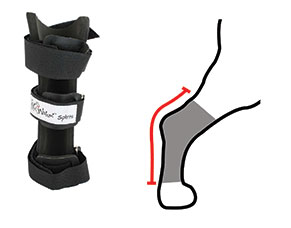
The hock splint stabilizes a pet’s hock joint, while leaving the hind paw free. This style hind leg brace immobilizes the hock joint to stabilize the joint injury.
Use a style splint for support around the hock joint for injuries including tarsal hyperextension, tarsal joint instabilities, osteoarthritis of the tarsal joint, and soft tissue injuries.
Rear Splint
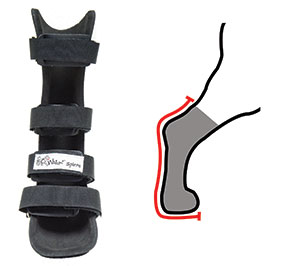
The rear splint offers the most support for a pet’s lower hindlimb. This style splint will stabilize from above the hock joint down around the ankle and under the back paw.
Give us a call for any questions you may have or to place an order! We are happy to help!

